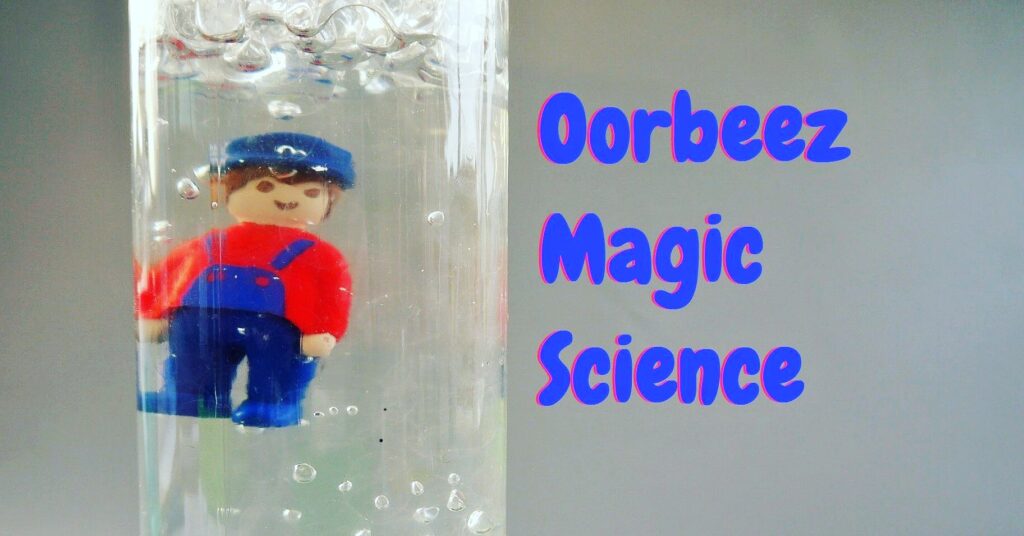Orbeez magic is an optical illusion science activity which takes advantage of the fact that kids love Orbeez! An object disappears amongst clear Orbeez…..until, that is…. you add water – so cool!! Do this at home, and get your kids amazed at the magic…erm…I mean science behind Orbeez magic. Either just enjoy the magical demonstration or turn it into your own experiment at home or in school. Watch videos and follow the how to guide….
Orbeez Magic
Material used
You’ll need these things:
-
- Water beads (selection of colours to make this activity an experiment, or just clear beads for a demonstration)
- Clean glass jar
- Jug of clean water
- Small plastic toys that can fit into the jar & don’t get damaged when they get wet!
Method
1) First swell your water beads in clean water, this takes a few hours
2) Fill your jar with clear swollen water beads
3) Push a toy into the beads so it is submerged (notice that you can’t see the toy very well)
4) Pour clean water into the jar, and the toy will be revealed as if by magic!
5) Carefully empty the jar of water using a sieve and repeat activity with another toy
Have a bit of fun with this, but read on to turn this activity into an experiment….
Make it an experiment
So far we have just done a demonstration, to make this activity a true experiment start to investigate the other colours of beads. Does water work for blue beads for example, or do you need to make a blue liquid (with food dye perhaps?) Do the beads have to be fully swollen, how about if they were half swollen?
Lab notes
What are Orbeez?
Orbeez are also known as water beads, and are a spherical shape and are made out of a gel which can absorb a large amount of water. They start out as dry tiny balls, the size of seed beads but swell to marble-size in water. The super-absorbent gel is composed of a water-absorbing polymer, commonly sodium polyacrylate (but there are others), and is sometimes referred to as “superabsorbent polymer” or, in dry form, as “slush powder”. This substance is the same gel found in disposable nappies.
Why is the object hard to see?
Light rays enter the jar and are scattered as they pass through the beads and the air spaces between them. This scattering makes the object blurred and difficult to see because the light rays are bent into different directions. Pour the water in, and the water fills those air spaces, and since water has a refractive index very close to the bead’s, light is not scattered but travels in straight lines and therefore into our eyes, and so we can see the hidden object. In fact the beads actually become difficult to see because the light passes right through them and the water without being bent.
Safety
The tiny, super-absorbent polymer balls can expand up to 400 times their original size when they come into contact with liquid. Obviously swallowing these beads would be a bad thing to do, so make sure children do not swallow the beads, in particular when they are in the unswollen form, as they will just swell up inside the stomach. Consumers are warned about the hazards of Orbeez, three children in Australia needed hospital treatment to have them removed after swallowing them. They’re commonly used as decorative items for bowls or vases and they’re also sold as a sensory activity for children. You can also buy giant Orbeez, which are about the size of your palm when swollen.
If you tackle this activity at home you do so at your own risk.
If you have as much fun as we did, feel free to share your pictures with us on Facebook.
Ruth
Chief Scientist at Devon Science
Want more easy science to do?
So you liked this activity and want more ideas, right? Well head on over to our blog to find out other cool experiments such as Glowing Fluorescent Liquid or the Super Easy 6 – a free download with 6 super-easy experiments to try at home!

